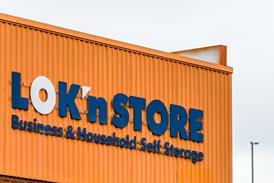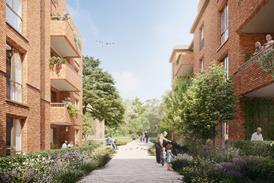Given the meteoric rise of co-working providers such as The Office Group and WeWork, it came as no surprise when property agent Cushman & Wakefield revealed in July that these types of office had topped the London leasing tables for the first time.

This trend has implications for the capital’s workforce beyond those who work within one of those spaces, as office landlords across the board try to emulate their recipe for success.
Over the past few months, we have seen FTSE 100 property giants such as British Land and Land Securities start to define how their own space will provide the co-working lifestyle loved by today’s modern workforce.
Astute landlords appreciate the need to balance five different types of workspace: the global HQ, the regional office, co-working spaces, coffee shops and home offices. People increasingly want to work in a flexible way, and this is backed up by numerous studies showing that true innovative thinking more often than not takes place outside the traditional office.
Antony Slumbers, one of the leading thinkers on the future office, predicts that a large percentage of offices, perhaps 40% to 60%, will eventually become variants of the co-working model.
He believes that “because the nature of work will have changed so much, emphasising human skills augmented by technology, offices will need to be more pleasant, as smart thinking requires the right kind of stimulation”.
Increasingly, people want to work in a flexible way
So, in the future, more people will be part of a co-working ‘community’ and enjoy a greater sense of connection to others in the space. The new players are pioneering this approach.
For example, Second Home, which has now opened offices in Shoreditch and Kensington, has curated a programme of cultural events and WeWork has organised a summer camp, which is available to its community of staff and members. Connectivity is further enhanced through a central, inter-company calendar for arranging meetings or social gatherings. The experience and feeling you get from working in these connected environments has taken centre stage.
Going beyond gimmicks
Cost efficiency is another added benefit of shared workspace, with companies and employees sharing more services for less money. Again, WeWork stands out as a leader, with service partners including Equinox, Hertz, Amazon and Ticketmaster. This goes beyond gimmicks and shallow offerings; these companies are building an expectation around their brand and consistently delivering a real service to the customer.
This shift in treating tenants as customers and creating the user experience has seen established office providers increasingly looking for innovative new tech and design solutions in their space.

This can be seen across the board, from apps to run concierge-style offerings, shared facilities and functional community spaces, which is more akin to the hospitality sector, to innovative software like VTS to help track tenant relationships and interactions. By digitally capturing a tenant’s specific needs - such as a pet-friendly policy or access to an onsite gym every Friday - landlords will be able to meet their customers’ particular requirements and enhance their own brand.
The future workforce can expect to see a more highly attuned working environment based around a deeper and more entrenched ‘customer relationship’. The focus in developing, designing and creating the office space of the future will shift to concentrate on the workplace experience.






























No comments yet